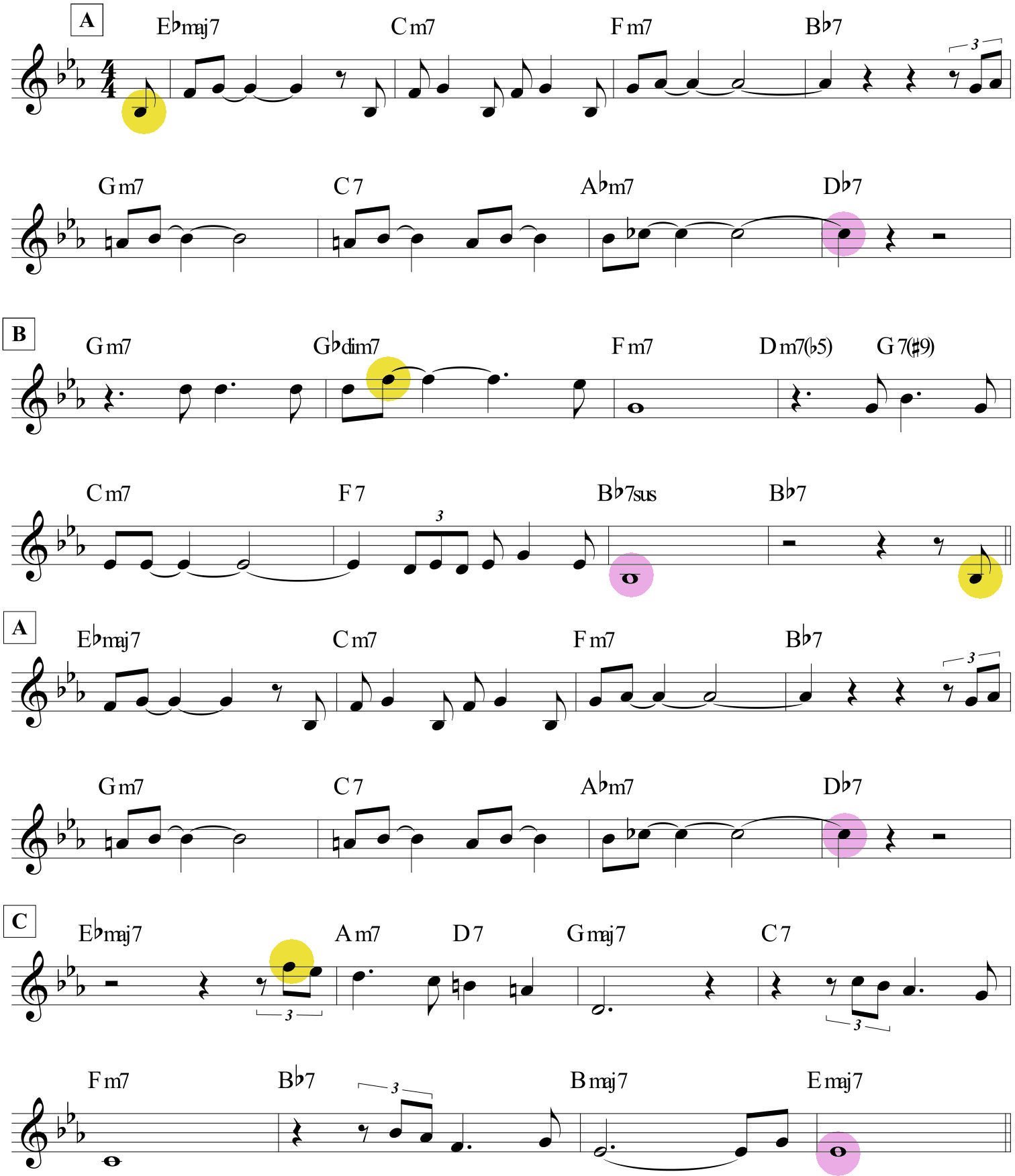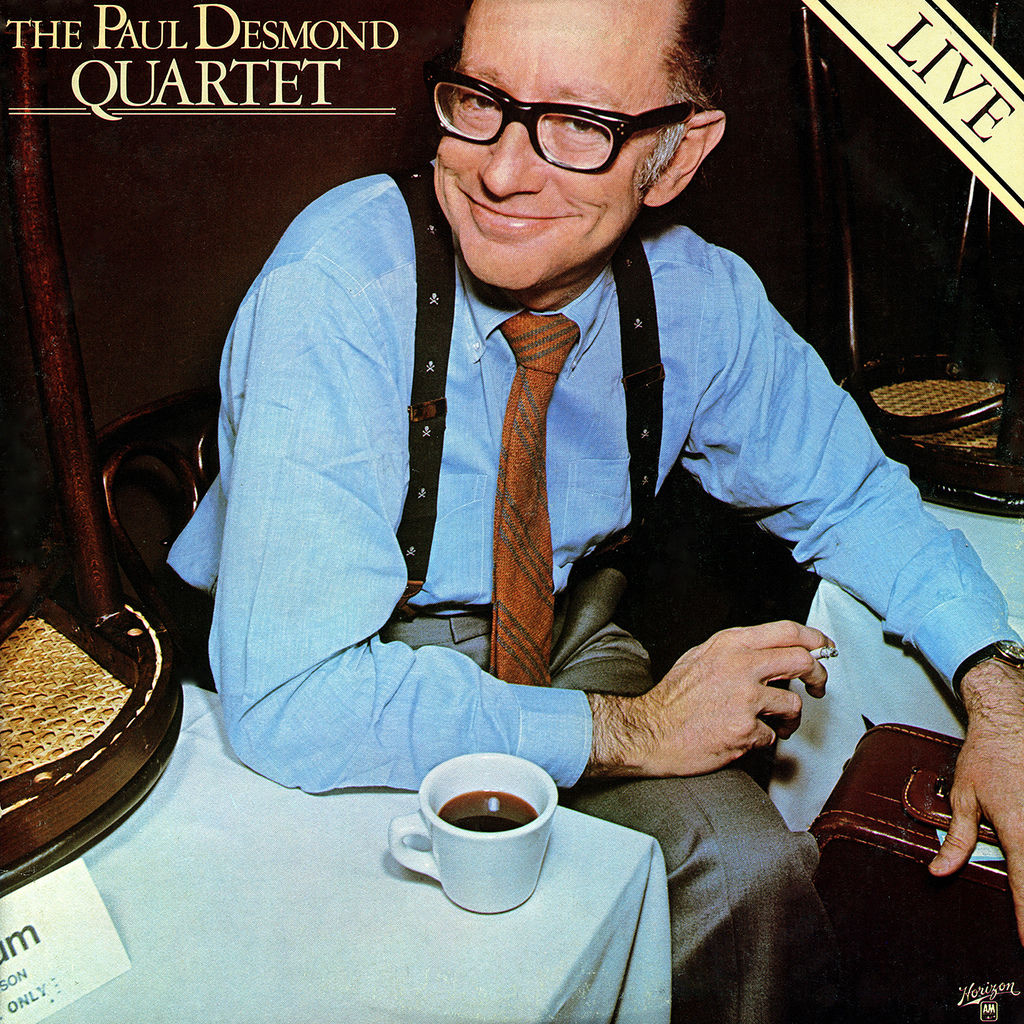[Monday Notes no. 105] There is a genre of compositions that in jazz are called contrafacts. Nothing illegal about it: these are pieces created using the harmonic progressions of already existing pieces. Wendy by Paul Desmond belongs to this category, in fact the chords are taken from For All We Know, a song from 1934.
Wendy’s theme has the form ABAC and is nicely proportioned: the melody ascends in the first eight measures [A] from B♭ below the staff to C on the third space, it descends in the next eight [B] from F on the fifth staff to B♭ below the staff.
This ascending-descending movement is repeated in the second half of the piece, i.e. in parts [C] and [A]. Following is the score with the starting point indicated in yellow and in pink the finishing point of the four sections.

Paul Desmond’s melodic sense is not only expressed in the theme. His solo begins like a typical improvisation, with a sixteenth notes phrase (1’40”). Instead of continuing in this register, or even intensifying the phrasing further, in the following measures Paul Desmond expands his phrasing and almost seems to invent a new theme.

The saxophonist first introduces a melodic element consisting of two eighths+ eighths triplet, highlighted in yellow on the score. Paul Desmond then plays a second element consisting of a repeated note + ascending sixth interval, in pink on the score.

Paul Desmond plays very differently from bebop musicians. Instead of playing dense phrases of sixteenths, Paul Desmond creates melodies that are always balanced and singable. His inventiveness is astonishing, his lines are essential and express a sense of proportion typical of the greatest of composers.
Wendy is an excellent song, even though it was composed quite naturally, during a concert in a bar. To remind us of this normality, we can hear the clatter of plates and cutlery during guitarist Ed Bickert’s introduction.
Some would be shocked by these noises, whereas they make me smile. Evidently they did not disturb these exceptional musicians, capable of creating their art even in a bar.
Until next Monday!
Download the lead sheet of Wendy


